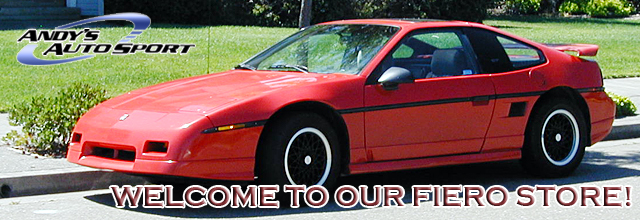Now, on with the details of my project.
I bought a 1984 Pontiac Fiero on Ebay for $177.50 USD. It was advertised with electrical problems and the owner said he parked it after a huge plume of white smoke poured out of the back while driving it one day. After buying it and trailering it home, I discovered that the electrical problem was a dead cell in the battery and that white plume of smoke was nothing more than the catalytic converter coming apart on the inside. A quick battery change and some straight pipe took care of the issues and I was off and running. It got 37 miles per gallon on the highway and I drove it for almost two years before the head gasket gave up at 167,000 miles.
I've always loved American cars but have always envied the reliability of foreign cars. The Japanese and Germans really know their stuff and it seems that the American manufacturers just never caught on to the concept of "quality over quantity" and "bigger isn't always better". I started looking into buying a new engine for the Fiero and even considered a V-8 swap, but I was rather fond of the fuel economy of the 92 hp, 2.5L factory motor. I just didn't like the fact that top speed was 85 mph, in fourth gear @ 4800 rpm. It finally hit me one day when I was surfing Ebay, why not have the best of both worlds? Why not put a foreign car motor into my American car? So the call went out for an engine/tranny combo that I could install in my Fiero and a week later, I got an e-mail from a guy with a complete 1989 Nissan Pulsar and a CA18DET. He said that he had too many projects going and he said I could have the whole thing for $300.
Now, some two years later, I give you this:
Standing in the car, in the sunroof hole, looking toward the back of the car.
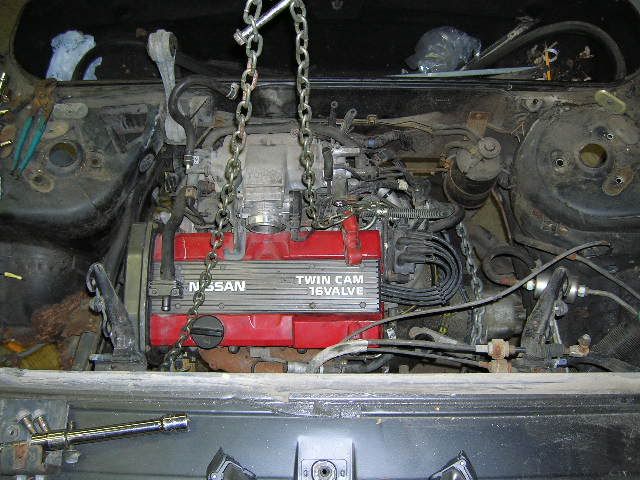
Nissan transmission shift rod and limited clearance for shift mechanism.
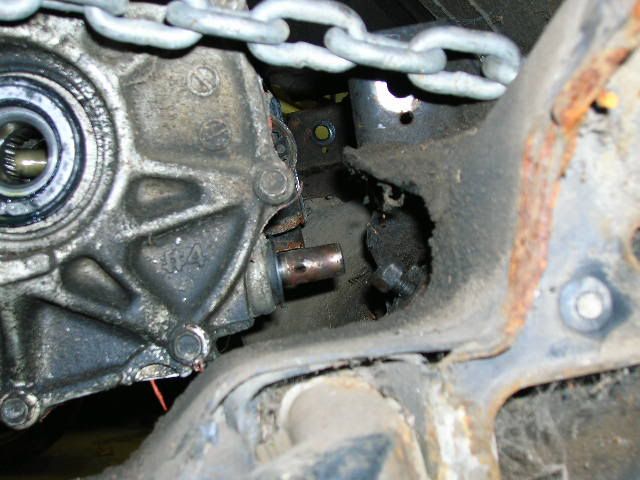
View from passenger side. The CA18DET is slightly taller than the factory motor, but the hood will still close.
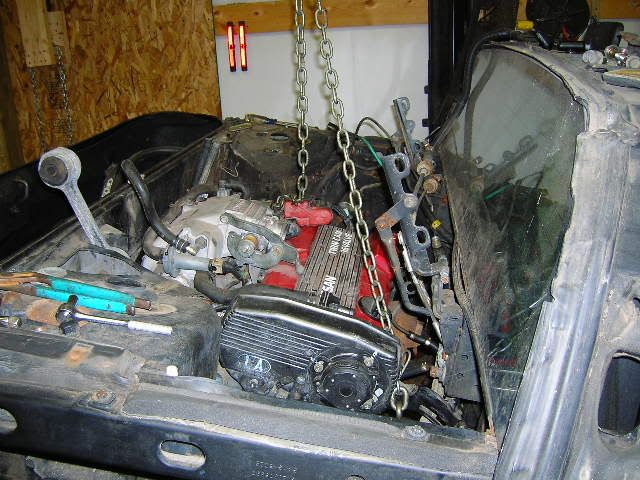
Now, due to the fact that I was utilizing the Nissan engine and tranny, I was forced to use the Nissan axles. This dictated that would have to use the Nissan spindles and struts. It was at this point I decided it would be easiest to do the Nissan to Pontiac conversion.
Pontiac ball joint and control arm assembly.

Nissan ball joint and control arm assembly.
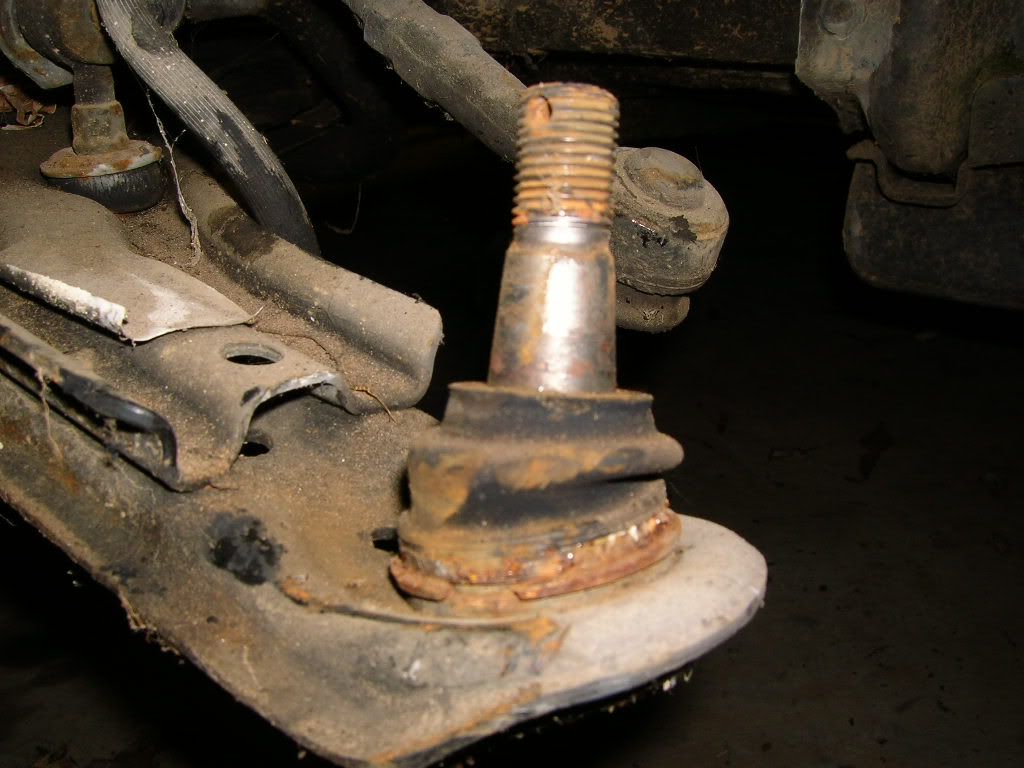
I removed both ball joints and found the Nissan ball joint was only slightly smaller diameter than the Pontiac ball joint. I cut off the end of the Nissan control arm and shaped to fit....


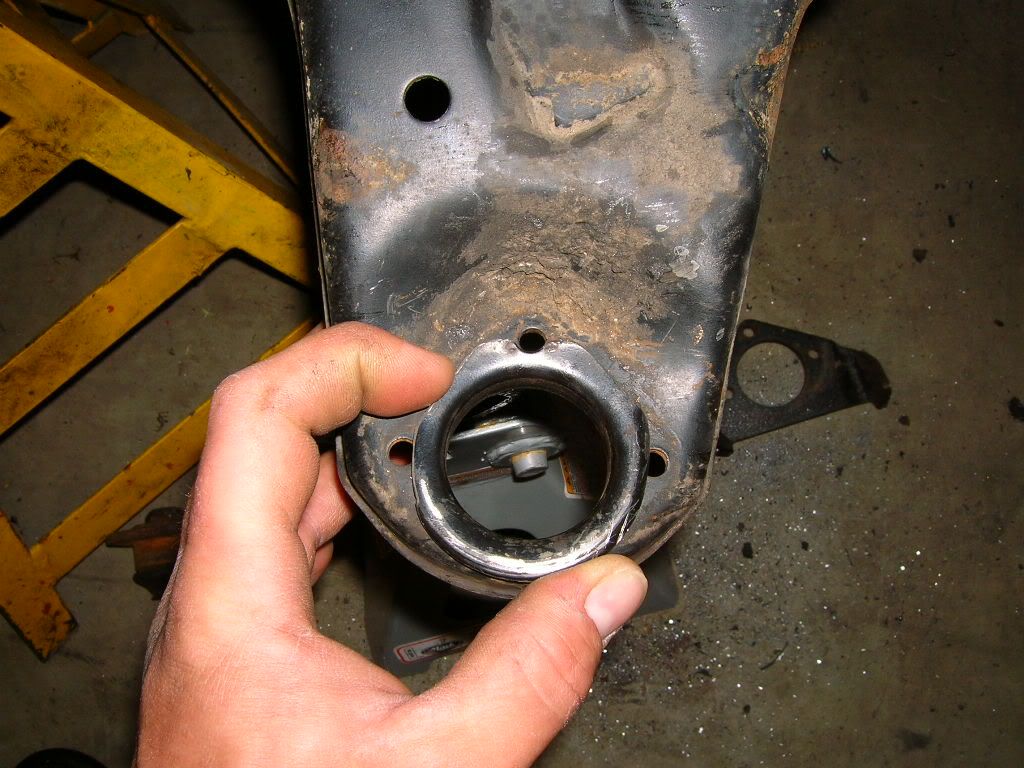
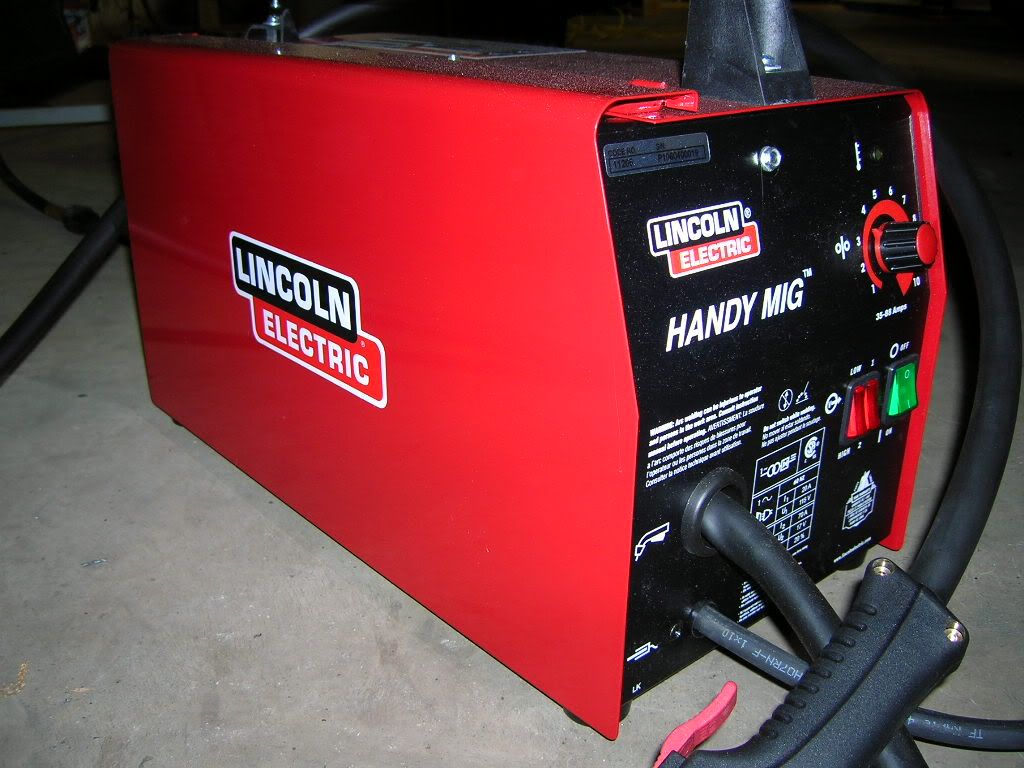
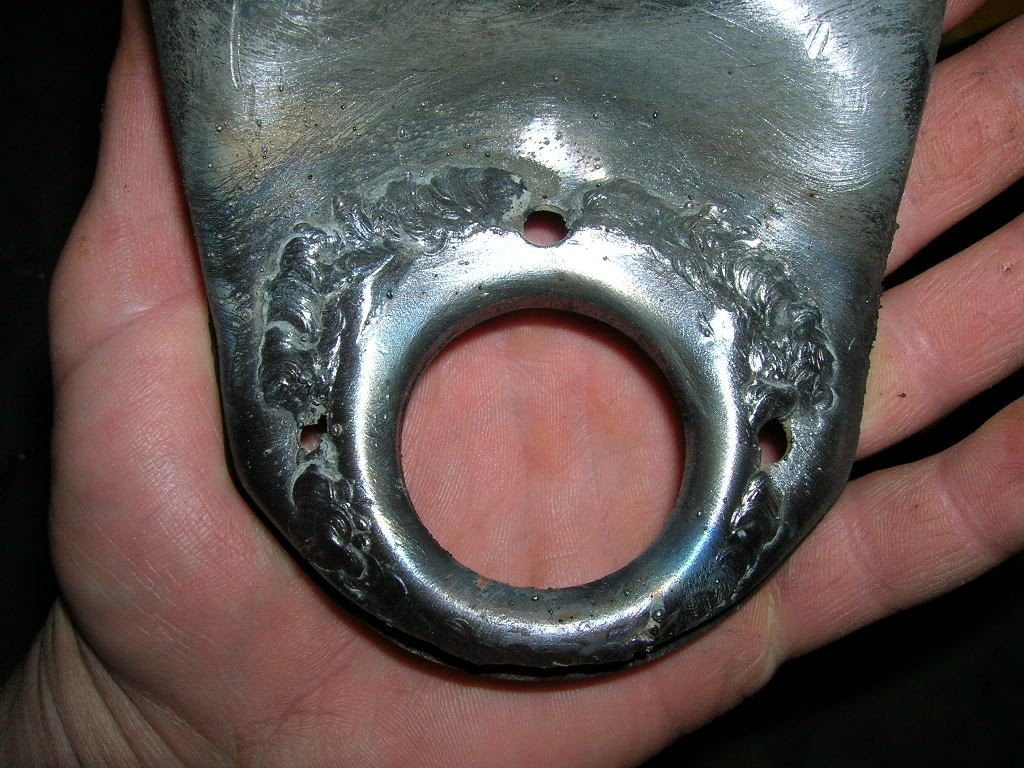
Never claimed to be a good welder....
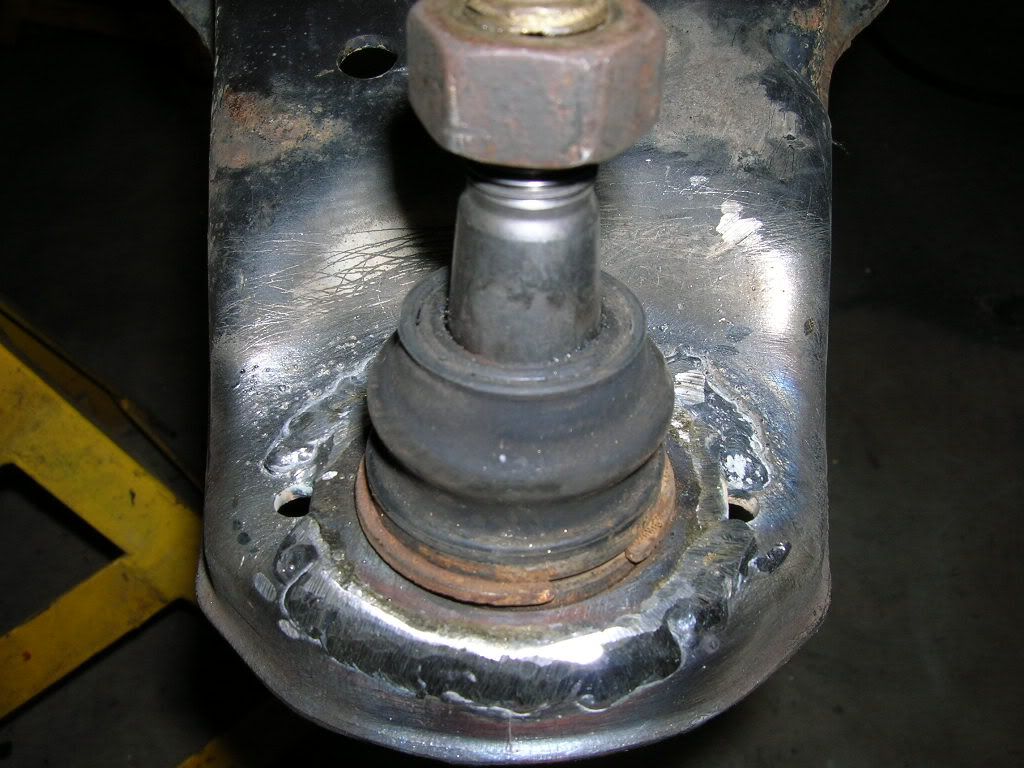
That done, I was now able to focus on the strut conversion.
This shows the top of the Fiero strut.

This is the top of the Nissan strut.
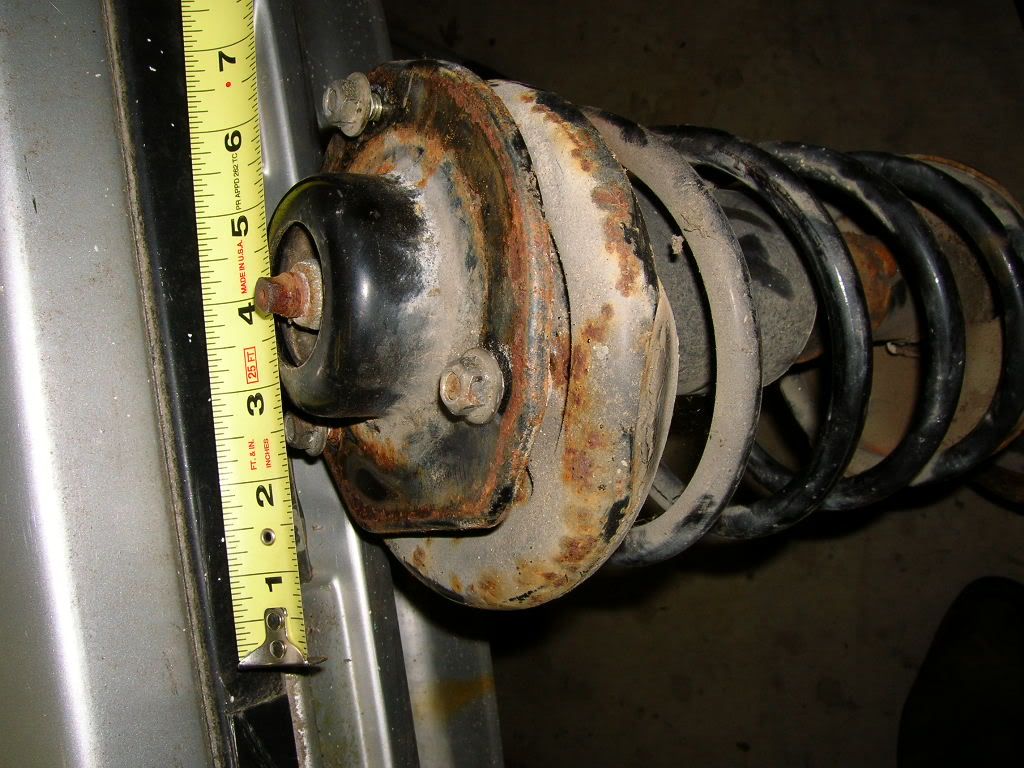
I have to incorporate the use of the top of the Fiero strut because one of the studs is used to hold a bracket for a body panel. Time to disassemble both struts to see what I have to work with.
Don't try this unless you REALLY know your knots.
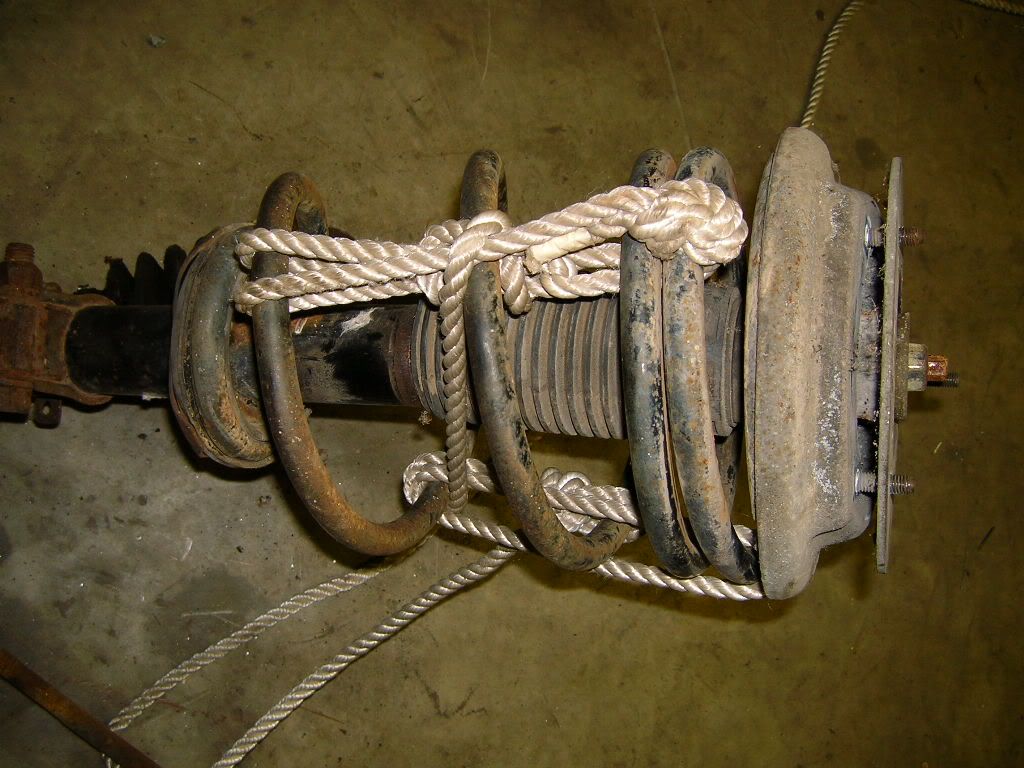
These are the pieces I need from the Fiero.
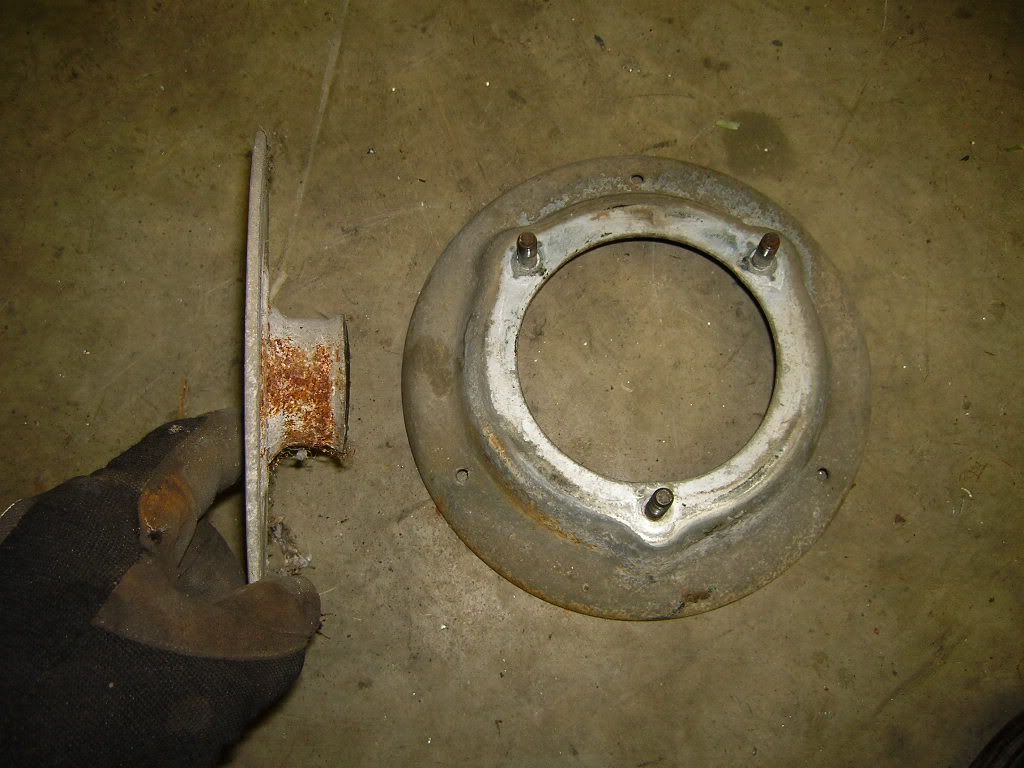
Figured out how to do it. Before and after... Take note of white paint marks on piece to the left. Those are new holes drilled to accomodate the Nissan strut bolts...
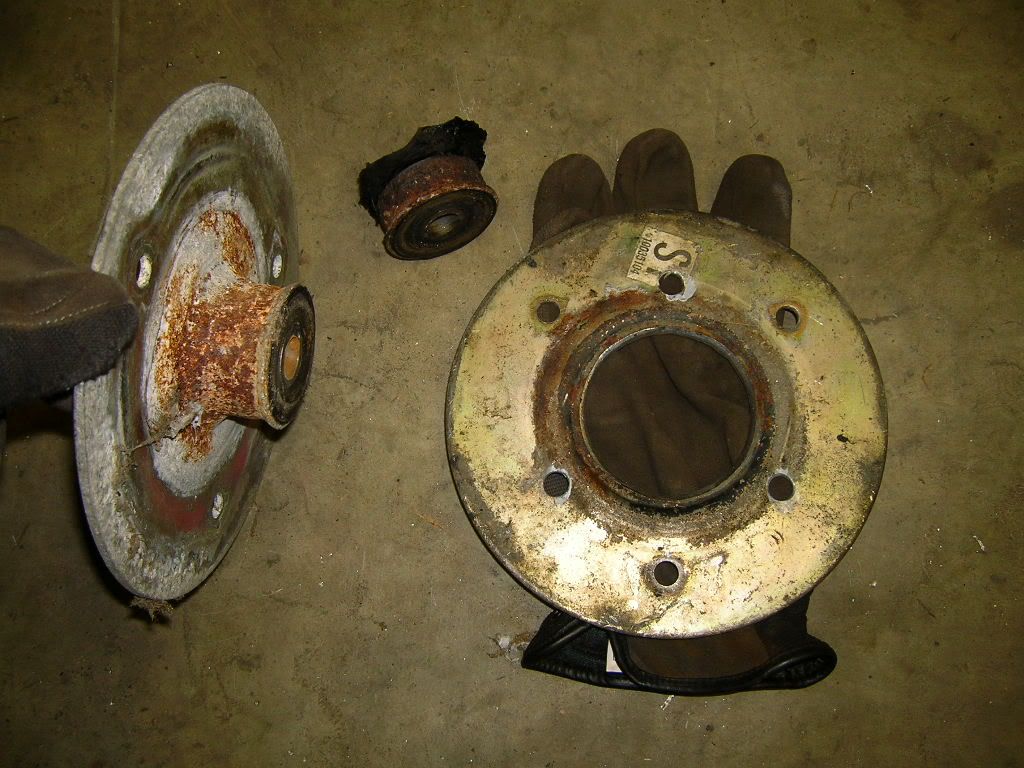
... and notches in the Fiero spring seat to accomodate the same.
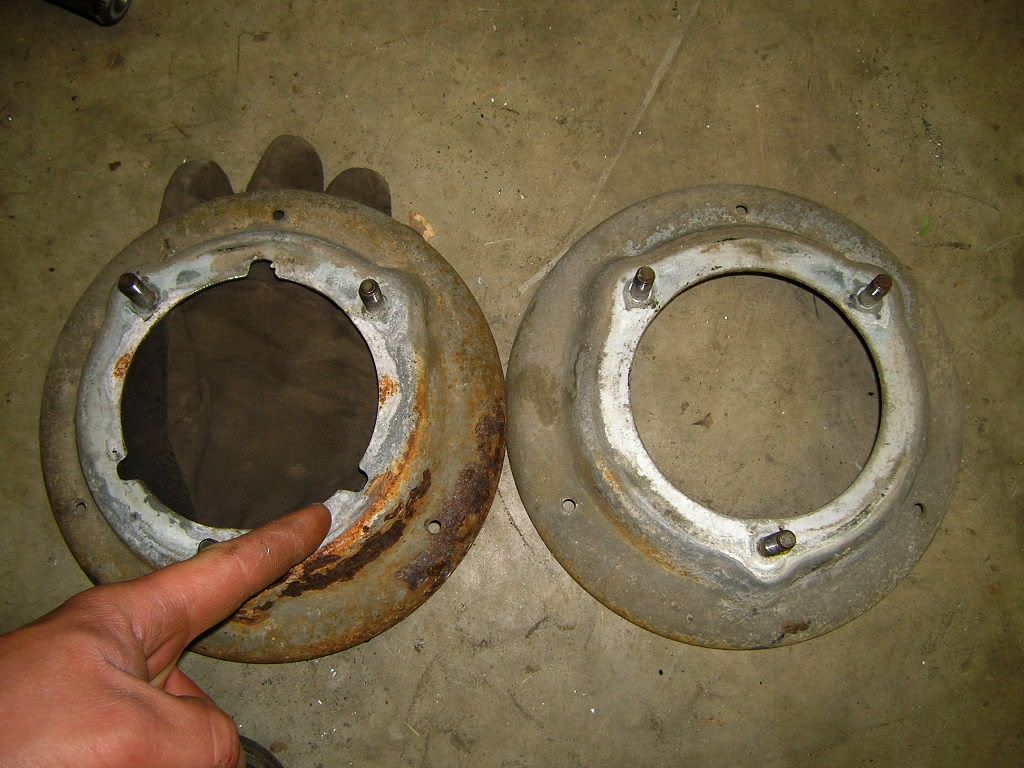
Time to put the two Fiero pieces together with the top of the Nissan strut (black piece).
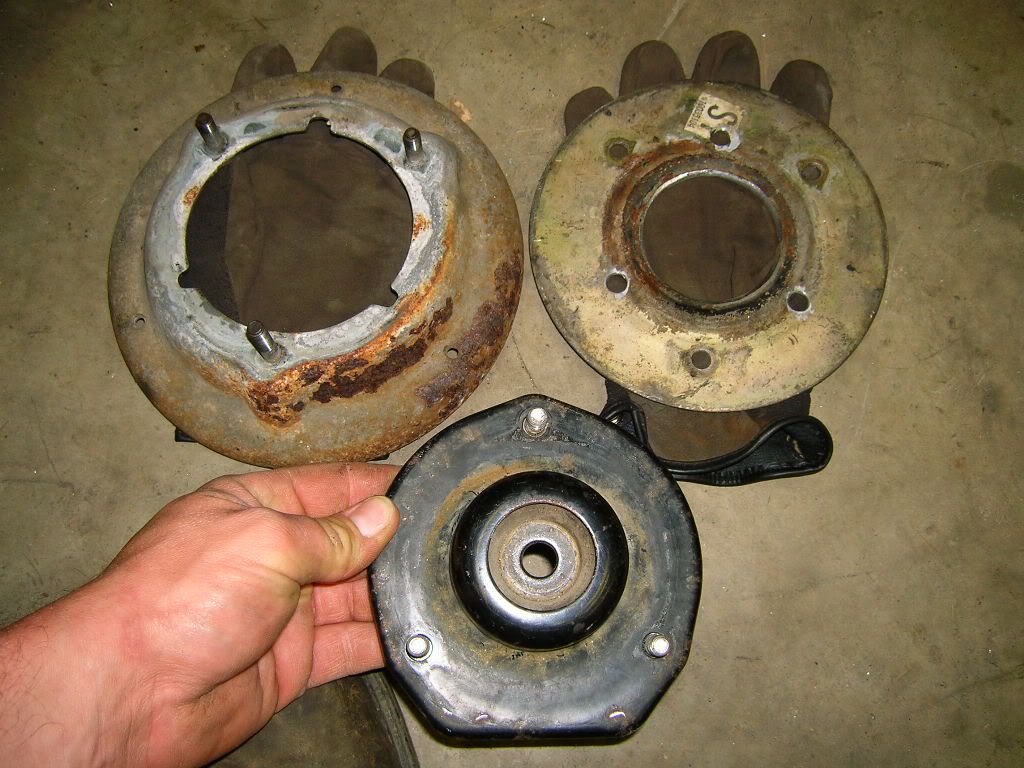
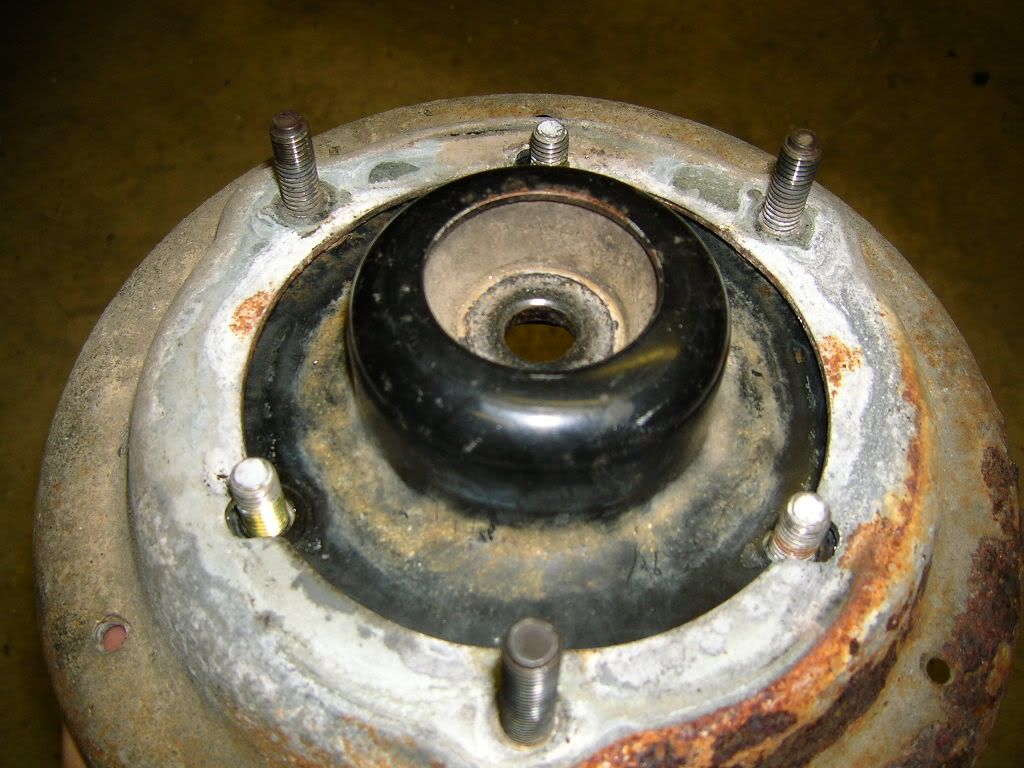
Finished product (top)

Finished product (bottom)
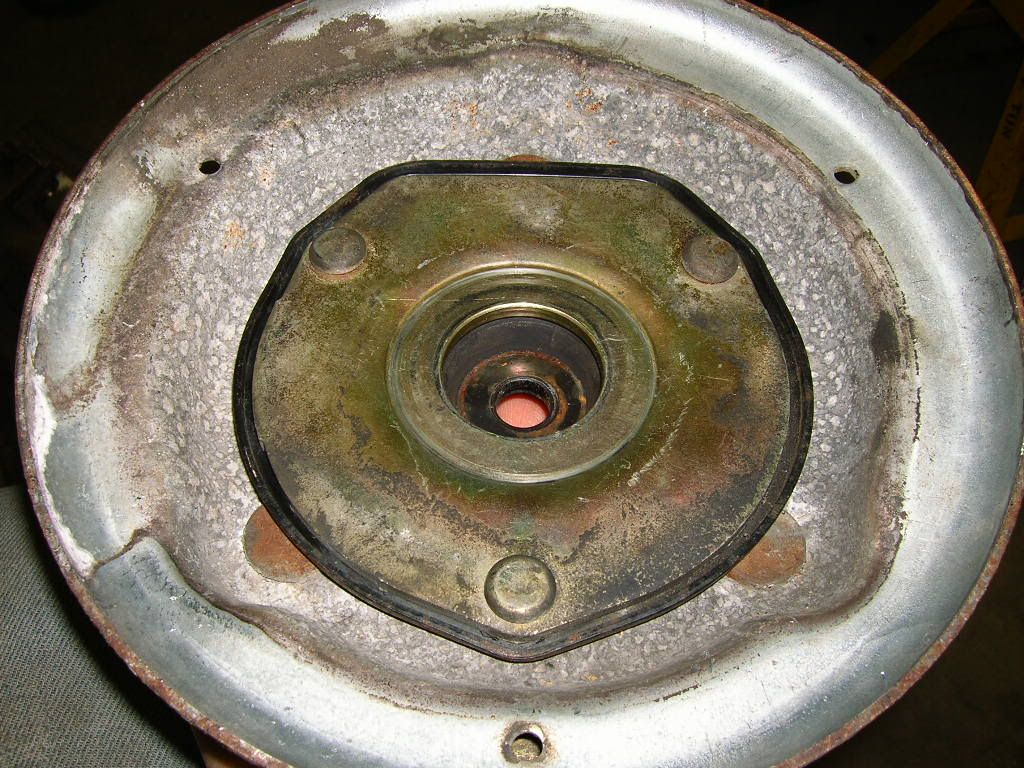
Modified assembly going back on the Nissan strut.
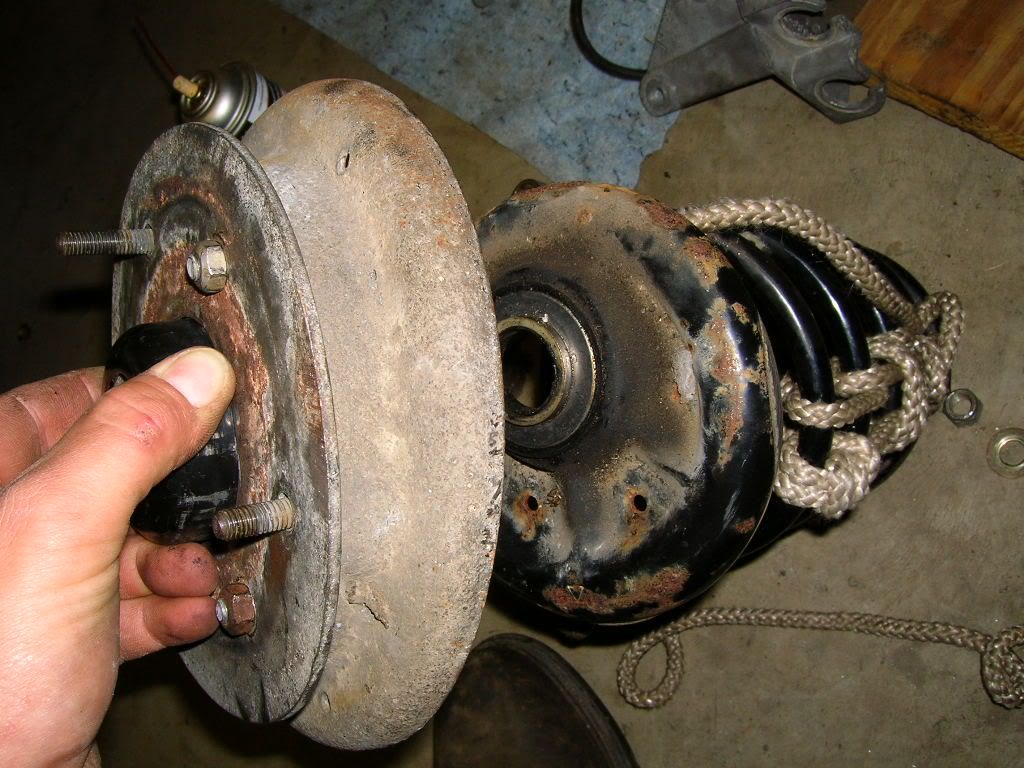
This is the strut tower in the Fiero where it all needs to go.

This is the strut tower in the Fiero after being modified to accept the new strut assembly.
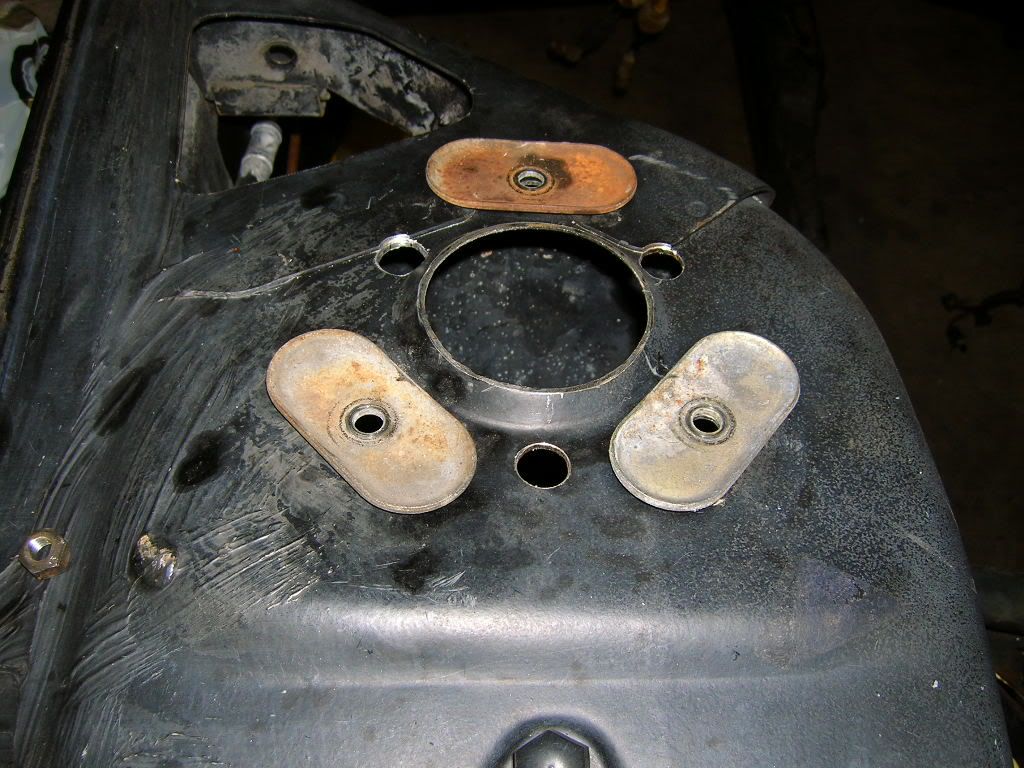
And this is what it looks like when you have a Nissan strut bolted into a Pontiac Fiero.
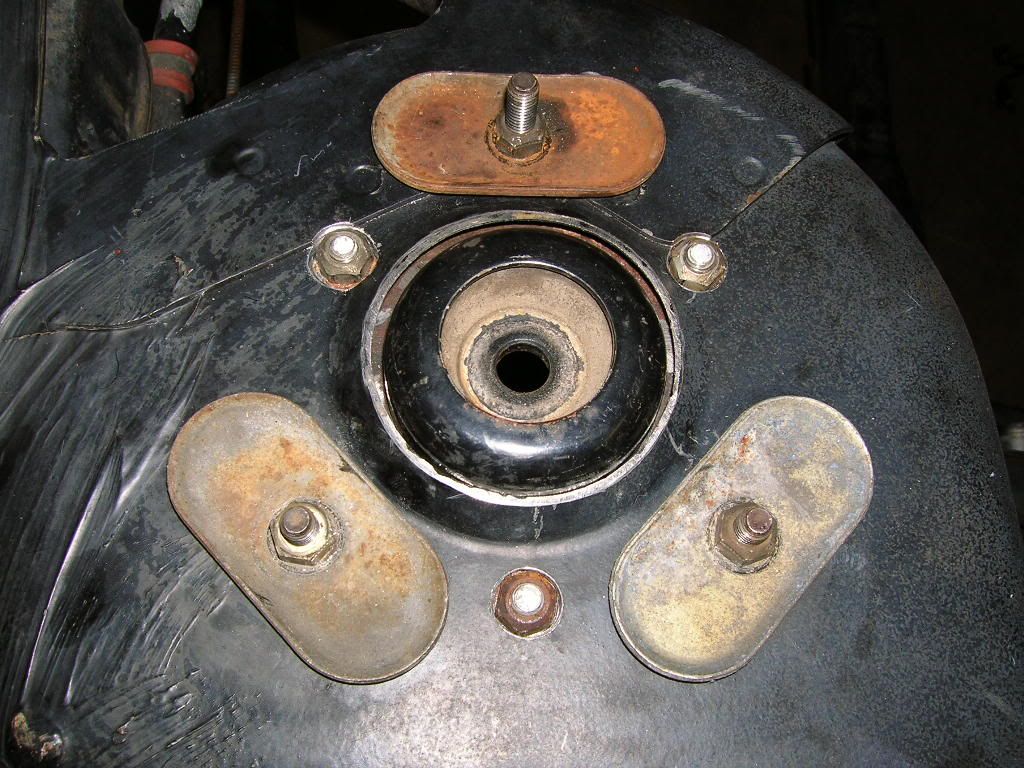

Nissan in the back, Pontiac up front.
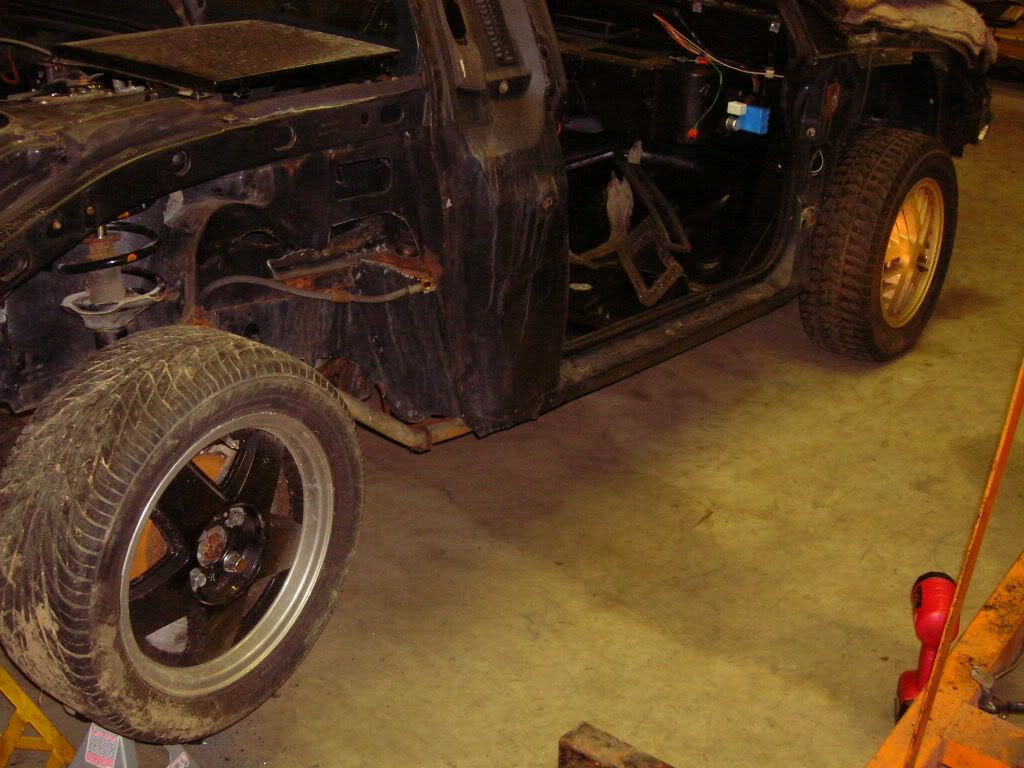
Alignment looks decent.

This is the bracket I spoke of earlier that will hold a body panel.
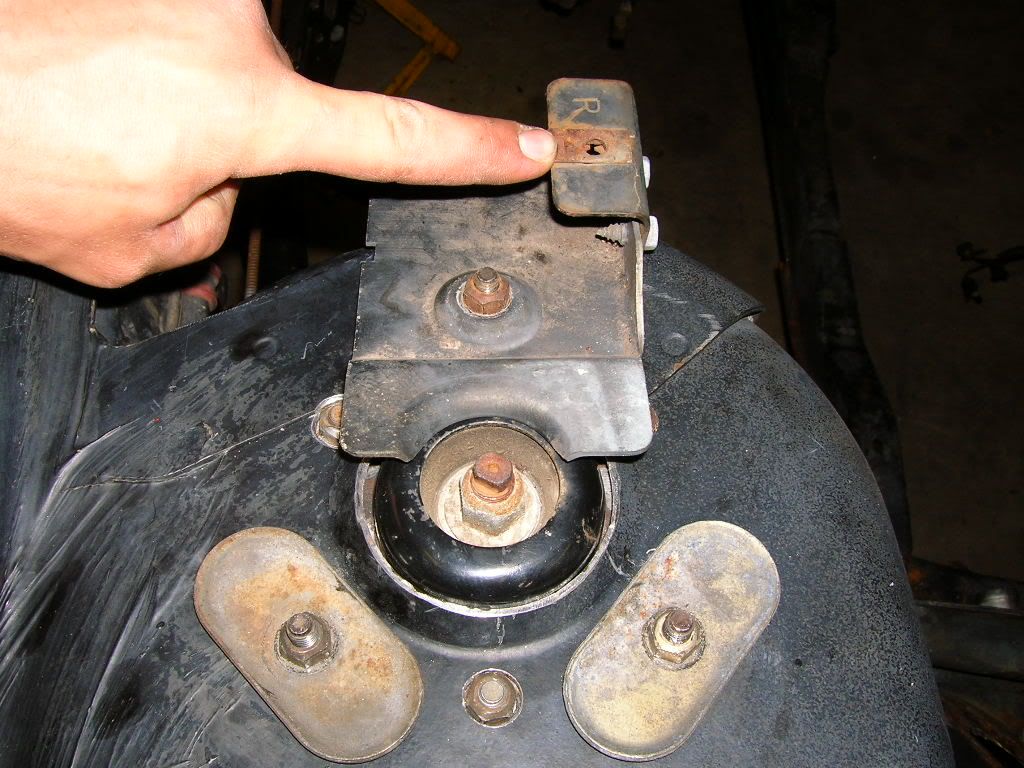
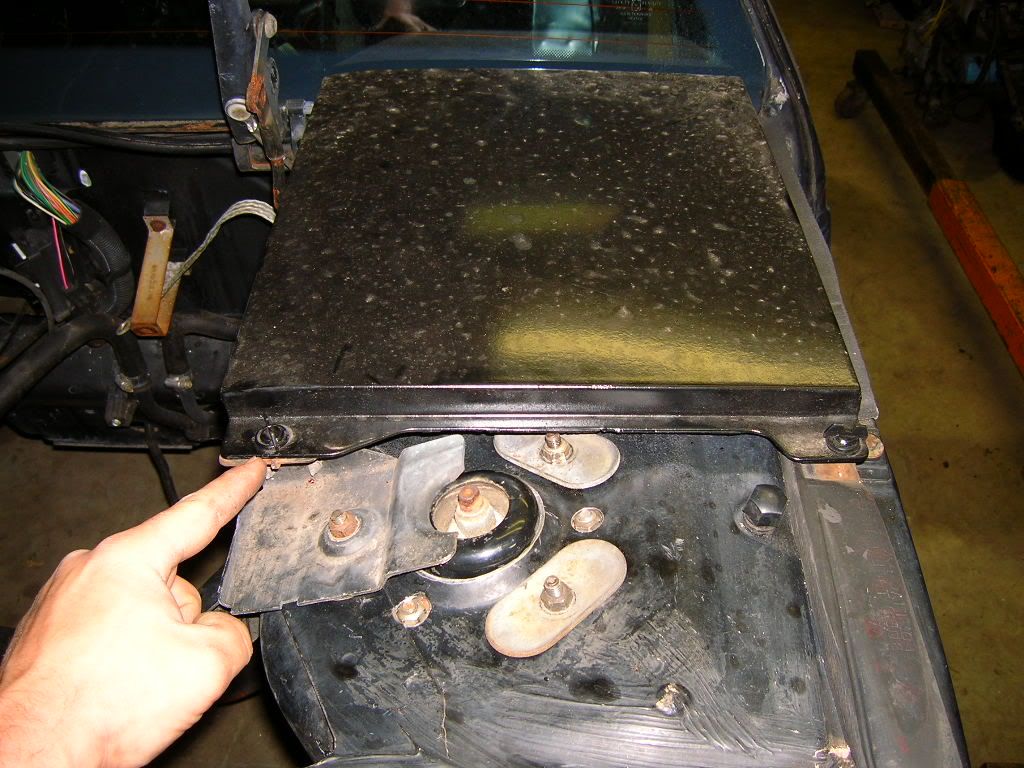
The factory location for the battery was in the rear of the car where all the heat is. Heat and vibration are battery killers and I sought to remedy that by relocating the battery to the front of the car. This would also aid in spreading the waight out a little.
Picture showing what was left of the original battery location.
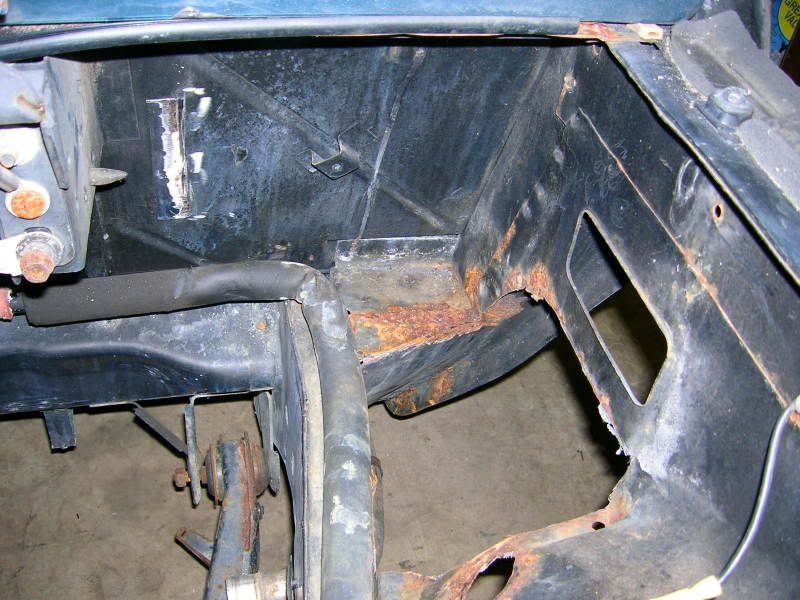
Picture off the compartment under the front hood of the car. The spare tire carrier is made of fiberglass and will be fairly easy to cut through. Hoefully I'll be able to set the spare tire in on top of the battery when all is done.
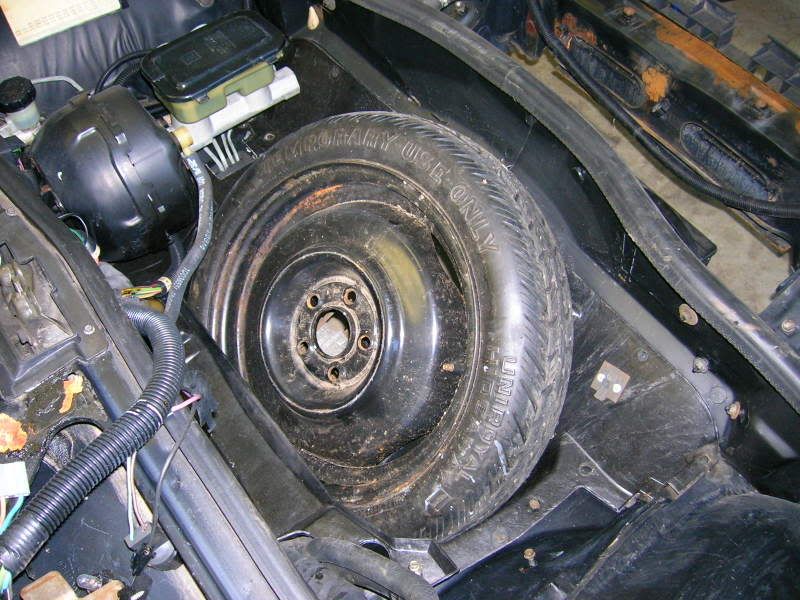
Sizing the hole for the battery.
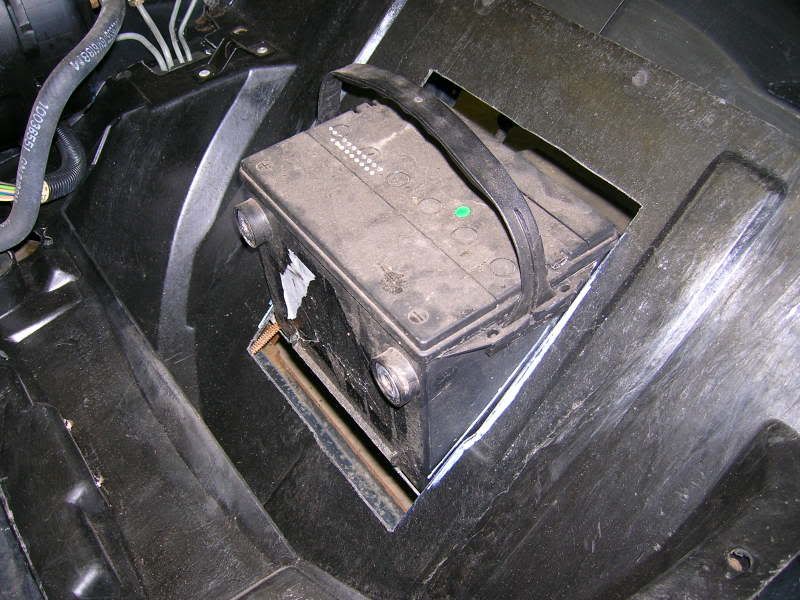
Hole cut, battery measured, and pattern laid out on 18 ga. steel.
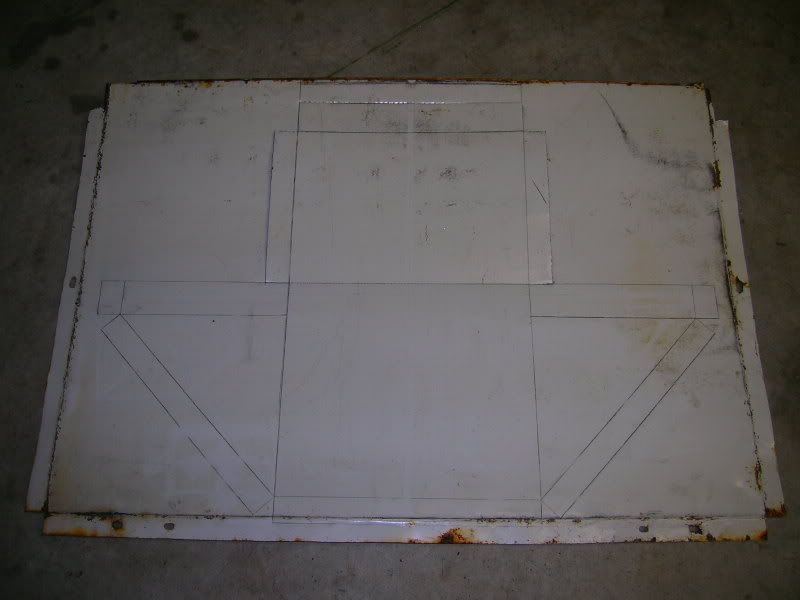
Painstakingly cutting out the pattern... one quarter of an inch (5mm) at a time. I don't do a lot of metal work so I really don't have the tools need to do it right. So you do with what you got, right?
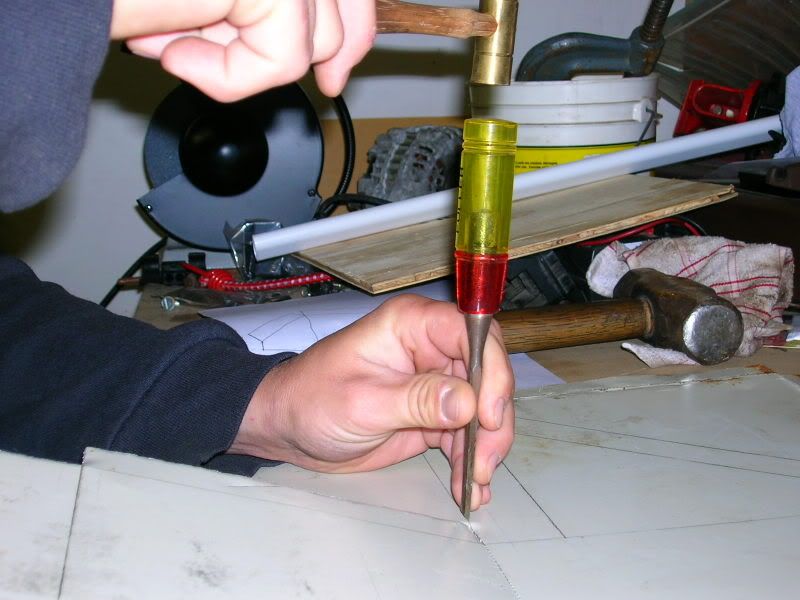
Scoring the corners of the batt. box with a center punch so it will bend easier and the corners will be better looking.
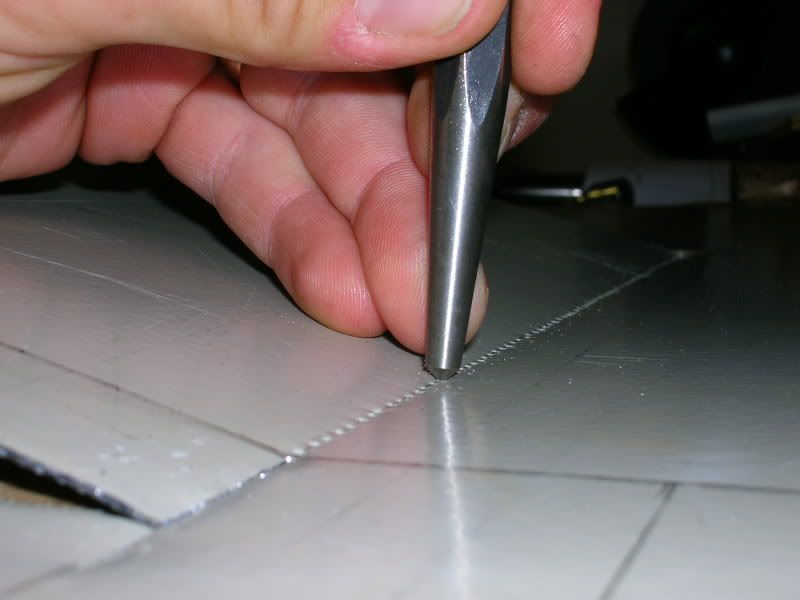
Batt. box complete. Welded the corners rather than chance rivets or screws rubbing a hole in the battery.
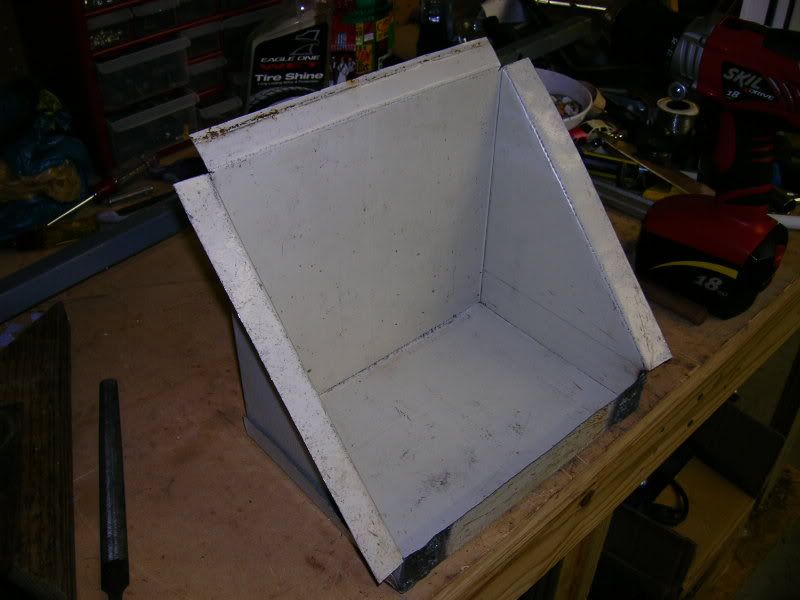
Cut holes in the front of the batt. box so as to accomodate the terminals.
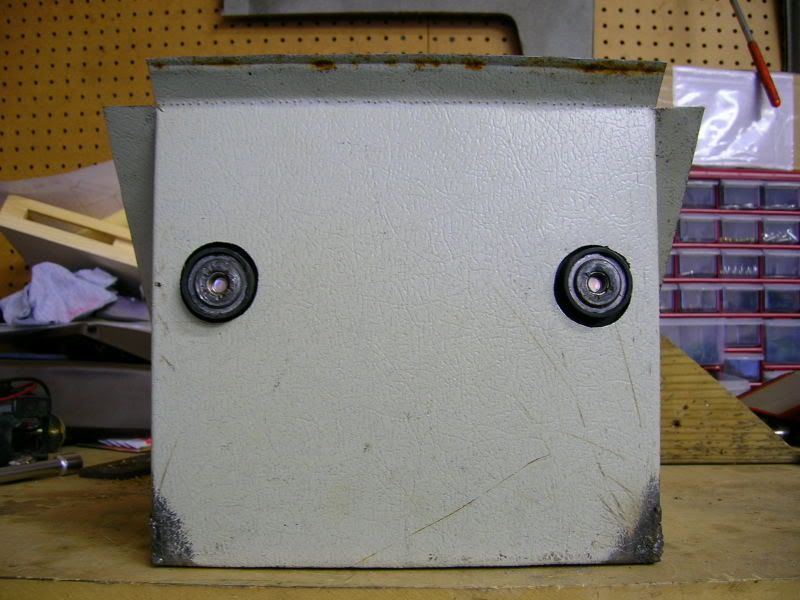
Since the completion of the steps above, I have been mobilized for a year with the Army and my wife had our little girl. Things have slowed down quite a bit but are soon to pick up again once I get a job. I've been unemployed since returning home from being mobilized and that has really killed anything that isn't necessary. I have managed to design and fabricate the prototype of a shifter mechanism. It's made out of rough parts I had laying around the shop, but it does work. All that needs be done now is to fine tune it and tighten up some spots where there is a bit too much play. Will post pictures if anyone wants or needs. If you ever get the chance to build your own shift linkage, don't. It sucks. It took over four weeks of constantly thinking about it, surfing google images, and going to bed thinking about it. On top of that, it took building and scrapping eight designs before I finally got it close and then another two weeks of tweaking it to get it right.
All that is really left to do is to plump the fuel, brake, and coolant lines and get the Pontiac tie rods machined down and threaded to accept the Nissan tie rod ends. I still need to figure out what to do about the clutch actuator as the Nissan was cable operated and the Fiero was a hydraulic system. Matt has made me aware that he can take care of the ECU end of things as the only ECU and loom I have is for the CA16DE that came with the Pulsar. So once the above is completed, all I'll have to do is get the plastic body panels painted, bolt them on, and fire it up. From there, the sky is the limit.
Thanks for reading.

